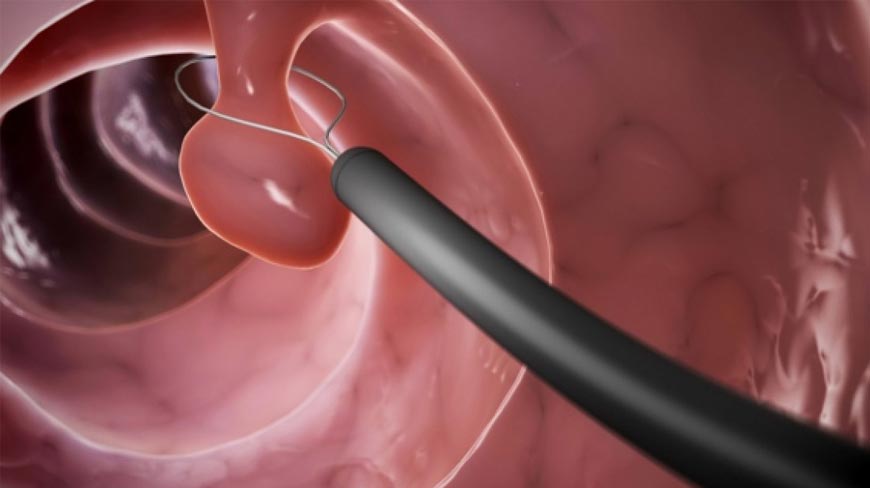4 Colon Polyp Symptoms You Need to Know
Colon polyps. Thinking about them may make you uncomfortable, but it’s estimated that up to half of adults have colon polyps. A colon polyp is a small lump that forms in the colon or large intestine. Some can turn into colon cancer, so it’s important to have them safely removed during a colonoscopy.
The Two Types of Polyps
There are two types of polyps.
- Non-neoplastic. These are less likely to become cancerous. Non-neoplastic polyps include hyperplastic, inflammatory, and hamartomatous.
- Neoplastic. These include adenomas, which are the most common precancerous types. Colon cancer risk increases as they grow larger.
Regular screenings are important. Early discovery and removal of any growths is the best way to prevent colon cancer.
Symptoms of Colorectal Polyps
Most polyps in the colon are asymptomatic, which means there are no symptoms. Most people don’t know they have them until they’re discovered during a colonoscopy. Because of this, it’s important to keep up with colon cancer screening.
Some people with colon polyps may experience these symptoms.
- Pain. Large polyps can obstruct the bowel and cause abdominal pain or cramping.
- Bleeding. If a growth bleeds, blood may be noticed on toilet paper or in the bowl.
- Change in stool color. Blood in the stool can make it look black or streaked with red. Changes in stool color can also be caused by certain foods, drinks, or supplements.
- Change in bowels. This can be constipation or diarrhea lasting a week or more.
Risk Factors for Colon Polyps
Though it’s not known what causes colon polyps, there are several known risk factors. A risk factor is anything that increases the likelihood of contracting a disease.
Risk factors that can be changed
- Dietary choices. High-fat, low-fiber, or diets high in red meat have all been linked to colon polyps.
- Smoking. Those who smoke are more likely to develop polyps. Smoking is a risk factor for many diseases. Smoking cessation can lower that risk.
- Drinking alcohol. Even light or moderate drinking has been associated with polyps. Men who drink should limit themselves to two drinks a day; women should only have one. Like smoking, alcohol is a risk factor for several diseases. Cutting back or quitting has many health benefits, including lowering the risk of many kinds of cancer.
- Obesity. Those who are overweight or obese have a higher risk of developing polyps. The link between weight and developing polyps is stronger in men than in women. Those who are overweight or obese should lose weight by eating a healthy diet and exercising.
Risk factors that can’t be changed
- Age. After 45, people are more likely to develop colon polyps. This is why doctors recommend screening starting at age 45. Doctors may recommend those with a family history or other risk factors begin screening earlier. The American Cancer Society recommends screening at age 45.
- Race. African Americans are more likely to develop polyps.
- Family History. Polyps (and colon cancer) tend to run in families. Those with colon cancer in their families should talk to their doctors, especially if the family member is an immediate family member or they developed colon cancer at a young age.
Colon Polyp Prevention
Although they aren’t entirely preventable, there are several ways to lower the risk.
- Eat more vegetables, fruit, and fiber.
- Lose extra weight.
- Avoid high-fat foods.
- Stop smoking and reduce alcohol consumption.
Diagnosing Colon Polyps
Since most polyps are asymptomatic, many are discovered during a colon cancer screening. They are usually detected in one of these ways.
- Colonoscopy. A scope, or a long, flexible tube with a tiny camera, is maneuvered through the rectum into the large intestine. During a colonoscopy, a gastroenterologist will see and remove abnormal growths.
- Sigmoidoscopy. Less invasive than a colonoscopy, a sigmoidoscopy allows a gastroenterologist to view the lower third of the colon using a scope. If polyps are found during a sigmoidoscopy, a colonoscopy will be needed to remove them.
- Virtual Colonoscopy. A CT scan is used to view the colon. Prep for a virtual colonoscopy is the same as a regular colonoscopy. A colonoscopy is needed if growths are found.
- Stool tests. During a stool test, a sample is tested for blood, and DNA is assessed. If a stool test is positive, a colonoscopy is needed. Stool tests often miss large polyps, however, so they should be used with caution.
It’s important to stay up to date with your colon cancer screening. If you are over 45 and haven’t had a colonoscopy, it’s time to schedule your first one. If you have a family history of colon cancer, your gastroenterologist may recommend you begin younger than 45.
Don’t delay lifesaving care – schedule an appointment today.
Request Appointment
Related:


